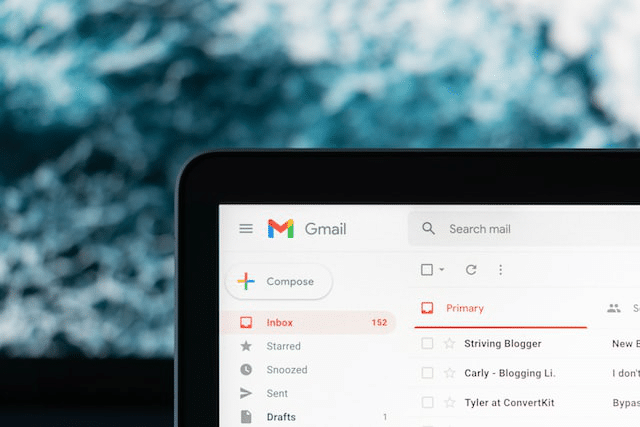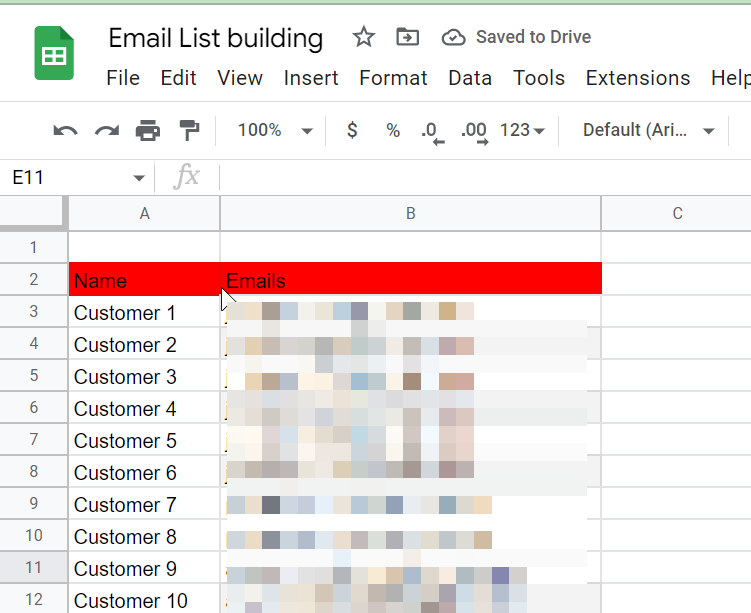In today’s digital age, businesses constantly search for effective ways to reach and engage customers. One strategy that has consistently proven its worth is email marketing. Aside from being cost-effective, it allows you to connect directly with your customers.
Through email marketing, businesses can reach a wide audience, measure the success of their campaigns, and automate targeted messages to subscribers.
This guide gives you a comprehensive overview of the benefits of email marketing and how businesses can leverage this strategy to grow their customer base and drive conversions.
Whether you’re an entrepreneur or a marketing professional, read on to unlock the power of email marketing and take your business to the next level.
Let’s discover what email marketing has to offer.
Unlocking the Benefits of Email Marketing
Email marketing is a powerful tool to reach potential customers and increase sales. It can help build stronger relationships with existing customers, engage and nurture prospects, boost brand awareness, increase ROI, lower costs, and more.
A targeted email campaign and a creative email are crucial to unlocking the benefits of email marketing. Businesses can effectively reach their goals by developing an email strategy that resonates with audiences.

To take advantage of email marketing’s benefits, companies should devote the time and resources necessary for a successful campaign. With the right approach and dedication, unlocking the potential of email marketing can be a rewarding experience for any business.
It also provides valuable insights into customer behavior and preferences, allowing businesses to optimize their strategies and achieve better results.
How businesses can benefit from email marketing?
1. Personalization
Personalization is one of the key advantages of email marketing. Unlike other forms of marketing, email marketing allows businesses to personalize their messages to suit the interests and preferences of their audience.
Email marketing allows for personalization in many ways. For example, businesses can use the recipient’s name in the email subject line or greeting to make the message more personal.
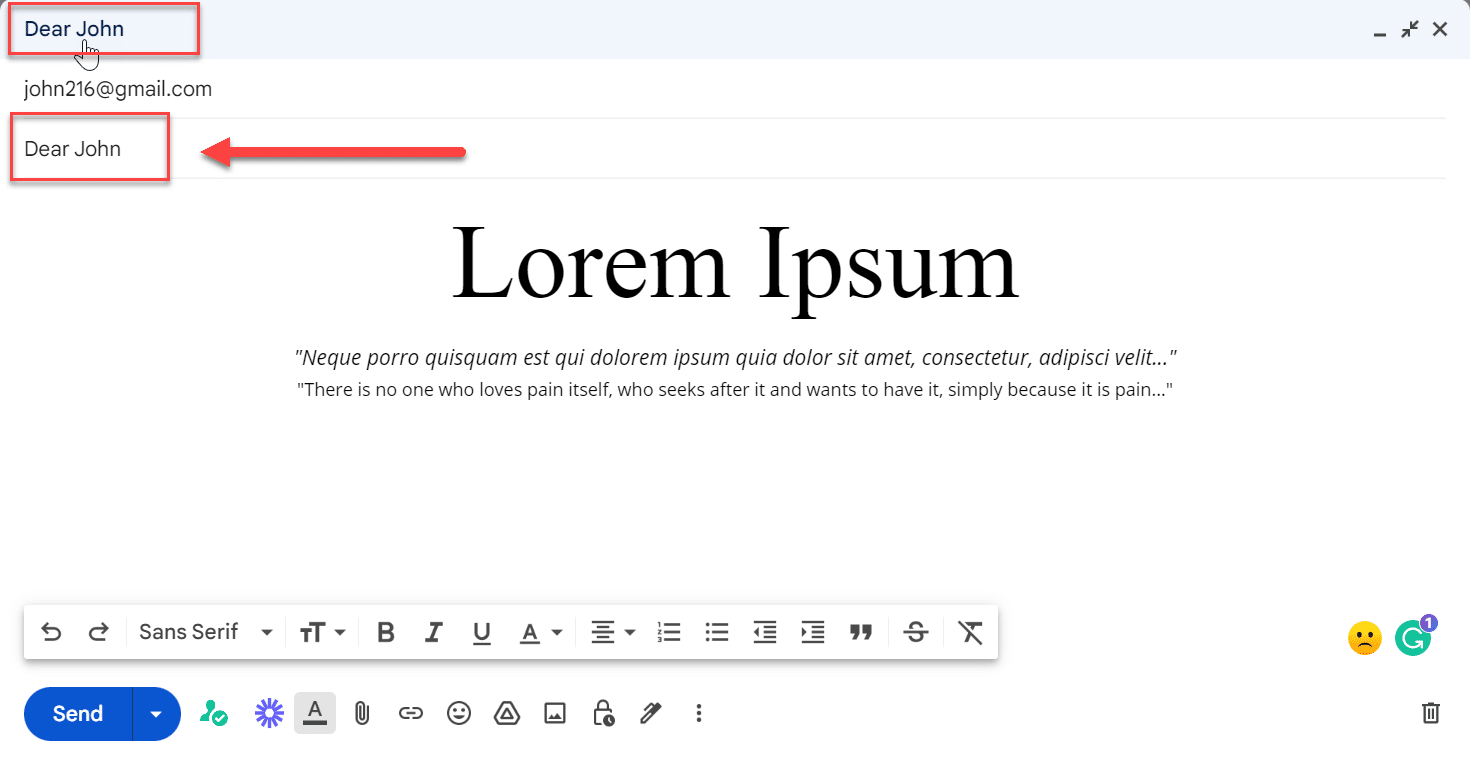
They can also use data such as past purchases, browsing history, or location to personalize the content of the email, such as product recommendations or promotions that are relevant to the recipient.
Personalized emails are effective in improving customer engagement. By customizing the email’s content to the recipient’s interests, businesses can increase the likelihood that the recipient will open the email, read the content, and take action.
This kind of email can also help build customer loyalty, demonstrating that the business understands and cares about the recipient’s needs.
Segmentation in Email Marketing
Segmentation is a critical process in email marketing that involves dividing your email list into smaller, targeted groups based on specific characteristics, interests, or behavior.

Here are some steps to follow when segmenting your audience:
- Define your segmentation criteria: Identify the key attributes you want to use for segmentation, such as age, gender, location, job title, or past purchase behavior.
- Collect data: Gather data on your subscribers using various methods, such as surveys, website analytics, or customer relationship management (CRM) tools. It will help you understand their preferences and behavior and create more accurate segments.
- Analyze your data: Use your data to create meaningful segments relevant to your business goals. For example, you might segment your list based on purchase history, website activity, or email engagement.
- Create targeted content: Develop content and messaging specific to each segment, using language and visuals that resonate with their interests and needs.
- Automate your campaigns: Use email automation tools to send targeted messages to each segment at the right time based on their behavior and preferences.
- Test and refine: Continuously analyze your metrics and refine your segmentation approach based on what works best. It will help you improve your targeting and achieve better results over time.
By following these steps, you can create more effective email campaigns tailored to your audience’s needs and interests, leading to increased engagement, conversion, and, ultimately, sales and profits.
2. Automated Campaigns
The concept of email marketing automation refers to using software like Mail chimp to send pre-written, targeted messages to subscribers at specified times or based on their actions.
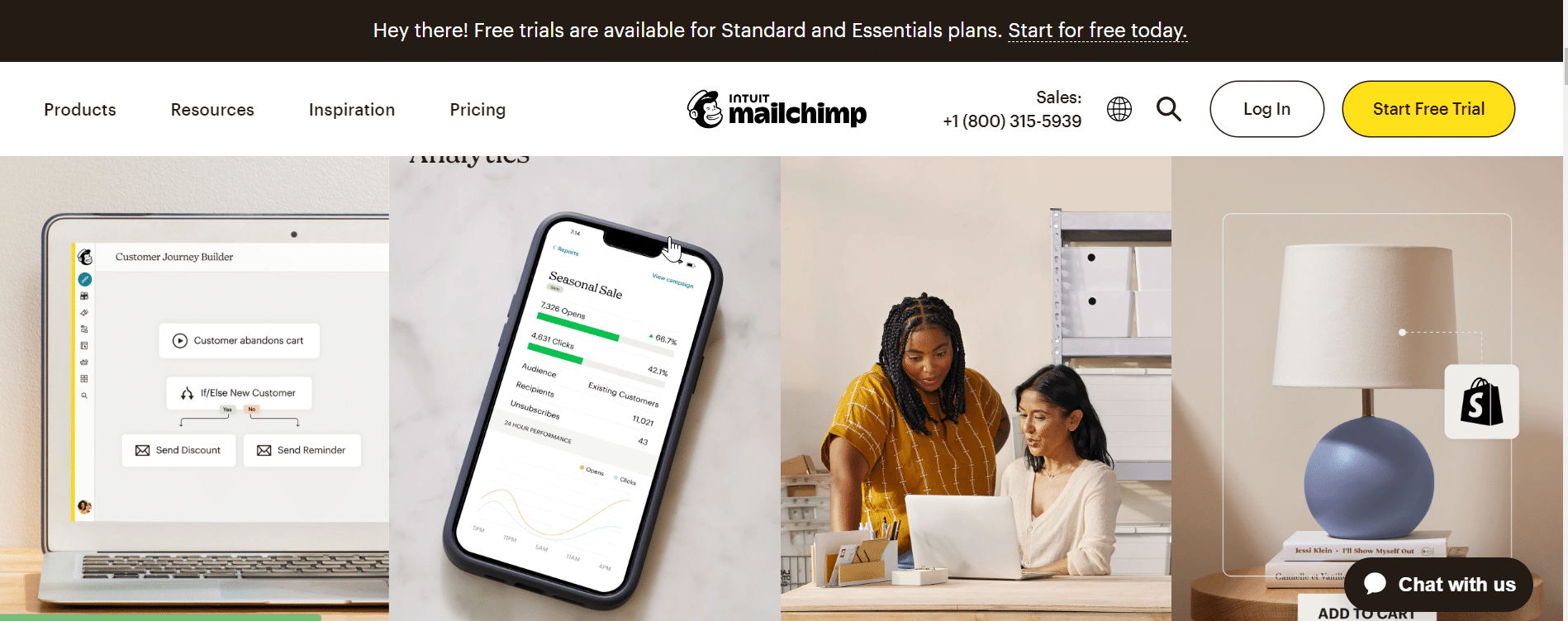
It allows businesses to send relevant messages to their audience, which can increase customer engagement and lead nurturing. Here is a closer look at how email marketing automation works and its benefits for your business.
How Email Marketing Automation Works
Automated email marketing works by triggering emails based on certain actions or triggers.
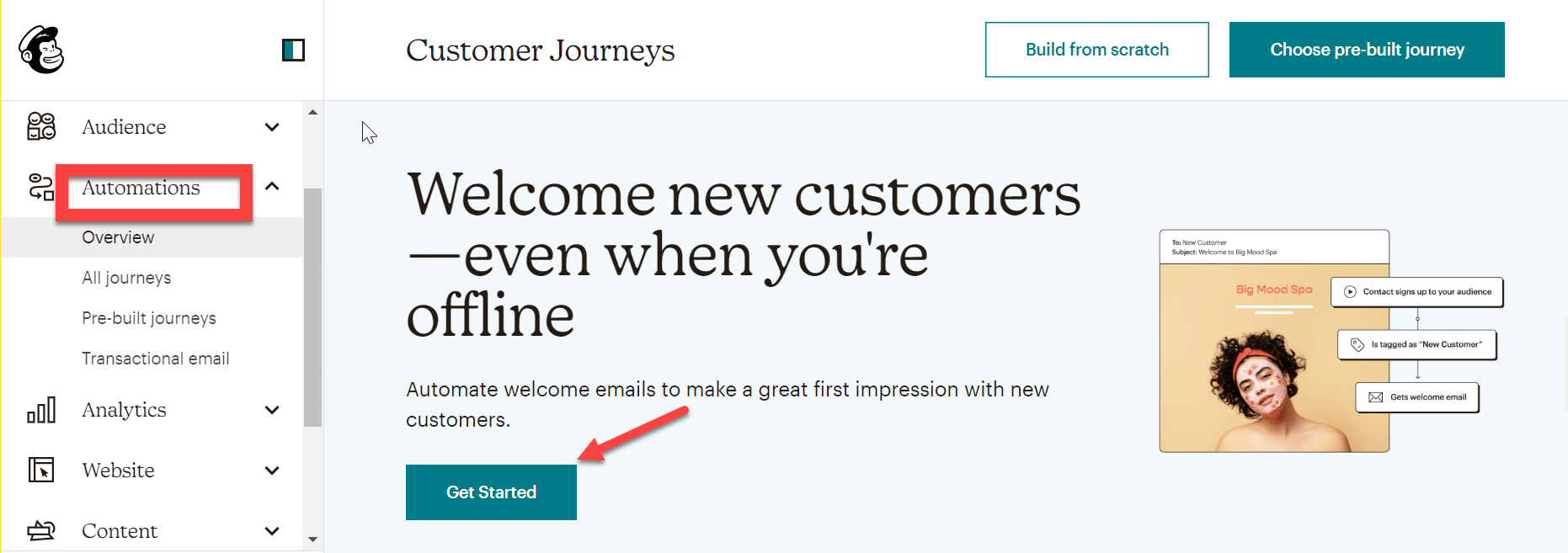
For example, a welcome email could be sent automatically to new subscribers after they sign up, a promotional email could be sent to customers who abandon their shopping cart, or a series of educational emails could be sent to leads who have expressed interest in a specific product or service.
These automated campaigns can be set up ahead of time and run automatically, freeing up time and resources for the business to focus on other areas of its marketing strategy.
Types of Automated Campaigns
Several types of automated campaigns are available to businesses.
- Welcome Emails: These emails are sent to new subscribers and can be used to introduce the business, provide information on the products or services, and encourage engagement.
- Abandoned Cart Emails: Customers who added items to their cart but did not complete the purchase receive abandoned cart emails. These emails can offer incentives or reminders to encourage the customer to complete the purchase.
- Re-engagement Emails: Re-engagement emails are sent to subscribers who have not engaged with the business’s emails for a certain time. You can use these emails to re-engage subscribers by offering incentives or asking for feedback.
- Drip Campaigns: Drip campaigns are a series of emails sent over a while to nurture leads and guide them toward a purchase. Senders can tailor these campaigns based on the recipient’s interests and behaviors.
Automated campaigns can improve customer engagement, lead nurturing, and efficiency in the marketing strategy. By using various types of automated campaigns, businesses can create a personalized and effective email marketing strategy.
3. Better Reach
If you want to reach a broader audience who might not be accessible otherwise, try email marketing. Businesses can reach potential and existing customers directly in their inboxes by leveraging email lists.

Here is a closer look at how email marketing can reach a wider audience and how it compares to other digital marketing channels in terms of reach.
Email marketing can reach a wider audience in several ways.
- High Deliverability: Unlike social media or search engine marketing, emails are delivered directly to subscribers’ inboxes. It means fewer barriers to reaching the audience, such as algorithms or ad blockers.
- Customizable Lists: Email marketing allows businesses to segment their lists based on various factors, such as demographics, interests, and past purchases. This customization ensures that the right message is sent to the right audience, increasing the chances of engagement.
- Shareable Content: Subscribers can easily share email content with friends and family. It can help increase the email’s reach beyond the original list and potentially attract new subscribers.
Comparison of Email Marketing to Other Digital Marketing Channels
Unlike other digital marketing channels, email marketing has several advantages in reach.
For example, social media algorithms can limit the visibility of posts to only a fraction of a business’s followers. In contrast, emails are delivered directly to subscribers’ inboxes, making it more likely that they will see and engage with the content.
Email marketing allows businesses to reach potential customers who have already expressed interest by signing up for the email list.
On the other hand, search engine marketing relies on search queries to trigger ads. Businesses may miss out on reaching potential customers who do not actively search for their products or services.
4. Email List Building
Building an email list is crucial for businesses to reach a wider audience through email marketing. It involves collecting email addresses from prospects and existing customers to create a database for email marketing campaigns.
Offering incentives, using pop-ups, leveraging social media, and using landing pages are effective email list-building strategies that can help businesses expand their email list and reach a wider audience.
Strategies for Creating Email Lists
Here are a few email list-building strategies:
- Offer Incentives: Businesses can offer incentives, such as a discount or a free resource, to encourage website visitors to sign up for the email list.
- Use Pop-Ups: Pop-ups can effectively capture visitors’ attention and encourage them to sign up for the email list.
- Leverage Social Media: Businesses can use social media to promote their email list and encourage followers to sign up.
- Use Landing Pages: Landing pages can be created specifically for email list sign-ups and can be optimized to encourage conversions.
By using email list-building strategies, businesses can build a high-quality email list and effectively reach their target audience.
5. Cost-effectiveness
Email marketing is an extremely cost-effective marketing channel for businesses of all sizes. Compared to traditional marketing channels like print, television, and radio, email marketing is significantly cheaper.
The cost of creating and sending an email campaign is typically much lower than other marketing channels as it does not involve the cost of printing, postage, or ad space.
High ROI of Email Marketing
Email marketing has a high ROI, which means that the cost of the marketing campaign is relatively low compared to the revenue generated.
The ROI of email marketing is typically measured by the revenue generated from the campaign divided by the cost of the campaign.

Based on a study by the Direct Marketing Association, the average ROI for email marketing is 3541%, meaning that businesses can expect to earn $35.41 for every dollar spent on email marketing.
Cost-Effectiveness of Email Marketing
Email marketing is cost-effective in several ways.
- Low Costs: When compared to other marketing channels, email marketing is relatively inexpensive. Businesses do not have to pay for advertising space, printing costs, or postage, which can significantly reduce marketing expenses.
- Customization: Businesses can customize their emails for each subscriber, which increases relevance and effectiveness. This level of personalization is more cost-effective than mass marketing campaigns, which can be more expensive to create and execute.
- Scalability: Email marketing campaigns can be scaled up or down based on business needs. Businesses can start small and gradually increase the size of their email list, and the frequency of their campaigns as their budget and goals allow.
Businesses can reach a wider audience, generate revenue, and build customer relationships by leveraging its personalization, scalability, and optimization features.
6. Analytics
Email marketing provides valuable analytics that can help businesses understand how their email campaigns perform and identify improvement areas.

By analyzing email metrics, businesses can gain insights into the behavior of their subscribers and the effectiveness of their email content, design, and targeting.
Standard Email Metrics
Some standard email metrics and their significance are as follows:
- Open rate: The percentage of subscribers who opened an email. This metric can help businesses gauge the effectiveness of their subject lines and overall email design.
- Click-through rate (CTR): The percentage of subscribers who clicked on a link within an email. This metric can help businesses measure the effectiveness of their calls to action and the relevance of their content.
- Conversion rate: The percentage of subscribers who completed a particular action, such as making a purchase or filling out a form. Conversion rate can help businesses measure their email campaigns’ overall success in achieving their business goals.
- Bounce rate: Bounce rate refers to the percentage of emails that failed to reach their recipient. This metric can help businesses identify issues with their email list, such as outdated or inaccurate email addresses.
Businesses can gain insights into improving their email marketing campaigns by analyzing these metrics and others.
For example, a low open rate might suggest that the subject lines or sender name need to be more compelling, while a low conversion rate might indicate that the call to action needs to be more precise or the landing page needs to be optimized.
Wrapping Up
Businesses can use email marketing to reach and engage with their target audience, ultimately increasing sales and profits. By leveraging the right strategies and tactics, businesses can skyrocket their revenue using email marketing.
Delivering relevant and personalized content increases subscribers’ engagement and conversion rates. One key approach is to segment email lists based on demographics, interests, and behavior and tailor messaging to each group.
Another effective strategy is to create compelling subject lines and calls to action that capture attention and encourage action.
By continuously analyzing metrics and performing A/B testing, businesses can optimize their email marketing campaigns and achieve significant growth in sales and profits.

